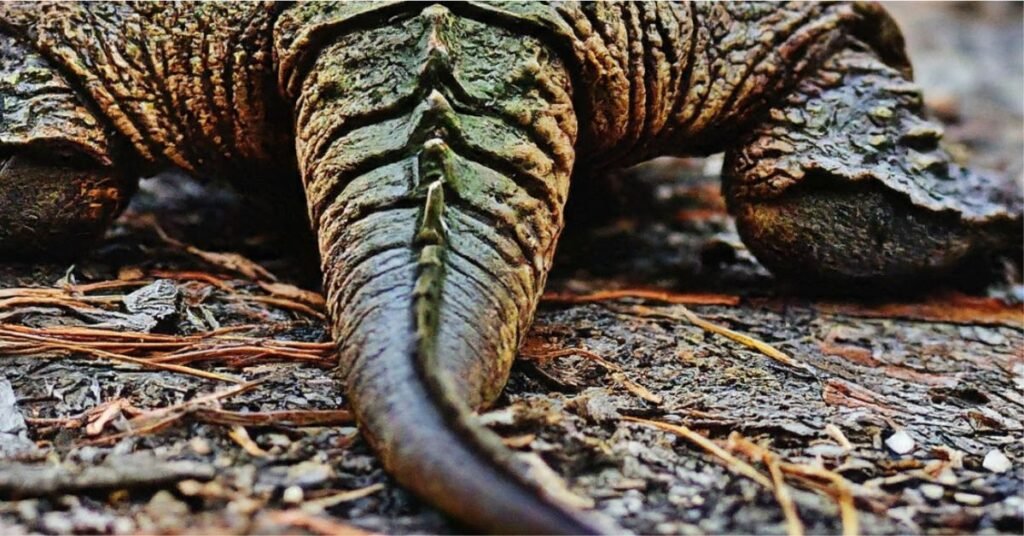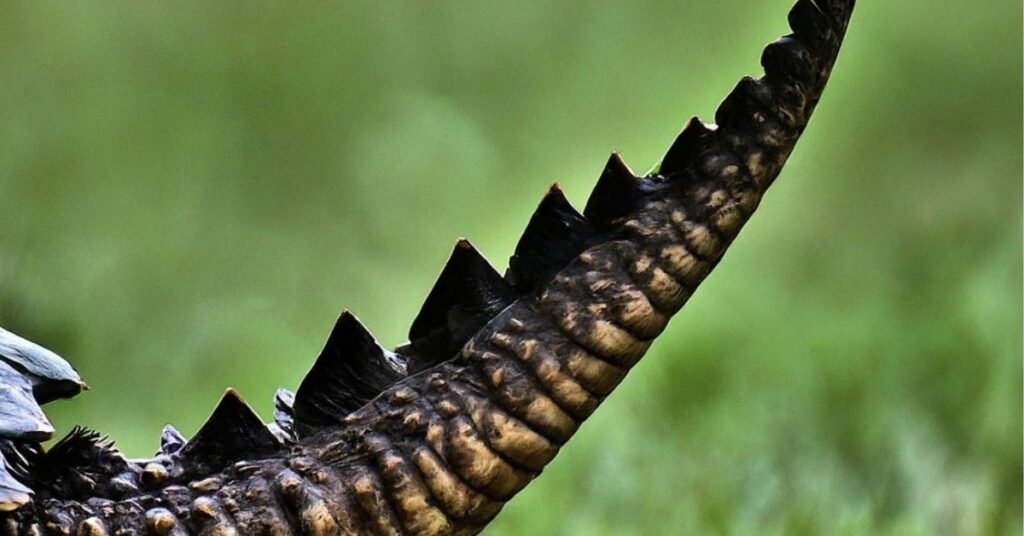Turtles are reptiles that belong to the Testudines reptilian order. Their physical anatomy is quite exciting and unique. When we think about turtles, a hard-shelled, more robust, armored structure comes to mind. There are approximately 8.7 million animals in the world, but the exact amount is unknown. While thinking about familiar animals, we know one of the most common features is the tail. So many people have this question: “Do turtles have tails?”.
Some turtles’ body structure confuses people about whether they have tails or not. All 356 turtle species have tails, and turtles’ tails play a vital role in their survival. So, today, we will dig into this question: “Do turtles have tails?” We will also discuss the anatomy of turtle tails and how they work in tier life.
Do Turtles Have Tails?

You might be surprised, but yes, all turtles have tails! Just like other animals, they have a tail that extends from their body. However, there are two reasons why you might not always see a turtle’s tail:
- Shell Cover: Sometimes, a turtle’s tail is tucked underneath its shell, making it hard to spot. It’s like a little secret hiding under their back!
- Short Tails: Some types of turtles have naturally shorter tails that don’t reach past their legs. They might look like they don’t have a tail at all.
Male turtles tend to have longer tails because some parts of their tails are used for mating. Meanwhile, female turtles have shorter tails because they use them to cover a special or back opening called a cloaca.
Turtle Tail Anatomy

Different turtle species or, depending on gender, the size of turtles’ tails can vary. However, the basic anatomy of turtle tails is joint to turtle body structure.
A Bony Core: The Backbone Connection
A turtle’s tail isn’t just a floppy appendage! The tail emerges from under the carapace (the top bony part of the shell) behind the anal scutes (unique scales on the back).
It’s actually an extension of their spine, made up of several bony vertebrae. These vertebrae are similar to the ones on our backs but with a unique twist – they’re flexible. This flexibility allows the turtle tail to move and bend in different directions, which is crucial for many functions.
Scaly Protection: A Shell-less Wonder
Unlike the rest of the turtle’s shell, the tail itself isn’t covered in bony plates. However, that doesn’t mean it’s unprotected. The tail is covered in thick scales, similar to the rest of the turtle’s body.
These scales provide a layer of protection against scratches, bumps, and other environmental hazards. They also help smooth the tail, which can be advantageous for swimming or navigating through different terrains.
How Turtles Use Their Tails
Believe it or not, a turtle’s tail is more than just a little nub sticking out! It’s actually a super helpful tool turtles use in all ways. Here’s what turtles’ tails can do:
Reproduction Purpose
The most essential function of the turtle tail is reproduction. Here’s how the tail plays a crucial role for both males and females:
Males
In some turtle species, the male’s tail is more significant or thicker than the female’s. This difference is an adaptation to successful mating. The tail helps the male maneuver and position himself correctly during copulation.
It might also contain vital reproductive organs or be used to locate the female’s cloaca (the opening for excretion and reproduction). During mating, the male’s tail can also help him hold onto the female and achieve successful fertilization.
Females
Even though their tails don’t have reproductive parts, they’re still for their survival. Female turtles use their tails like a cover over a backside opening called a cloaca. This opening is essential for both mating and waste elimination.
When it’s mating time, the female moves her tail out of the way to let the male fertilize her eggs. But most of the time, the tail keeps the cloaca clean and safe from bumps and scrapes. It helps keep the female healthy and ready to lay eggs.
For Swimming
For turtles that spend a lot of time in the water, their tails are like underwater steering wheels! They act as rudders, helping the turtle turn and navigate through the water with ease.
The tail also helps them move forward by making strong side-to-side swishes, propelling them through the water like a tiny boat.
For Balanced Movement
Turtles can have a hard time staying balanced because of that heavy shell, especially when they’re climbing rocks or walking on uneven terrain. This is where the tail comes in handy again.
It acts like a counterweight to the shell and helps the turtle stay upright. The turtle’s tails also prevent it from tipping over, like a built-in balancing beam on its body.
For Digging
Some turtles, especially female turtles, need to dig burrows in the ground when they lay eggs. Their tails are like small shovels with solid muscles. Female turtles use their tails to push dirt and sand away to create a safe and cozy nest.
For Communication
This one might surprise you. In some species of turtles, the tail might play a role in how they communicate with each other. For example, snapping turtles have been seen using their tails to lure prey closer.
Do All Turtles Have Tails?

Yes, all healthy turtles, from the tiny bog turtle to the massive leatherback sea turtle, have tails. Sometimes, turtles hide their tails under their shell so they look like they’re missing.
It’s like a secret hiding spot for their tails. Some turtle types, like box turtles, have naturally shorter tails. These tails might not reach past their legs, so they can easily miss.
Even though it’s rare, some turtles might be missing their tails due to injuries or fights. However, unlike some lizards, most turtles can’t regenerate a lost tail entirely.
Here’s an interesting fact: Baby turtles might seem tailless for the first few years of their life. This is because their tails grow at a slower rate than their bodies. But their tails will become longer and more noticeable as they grow.
Tail Variations Depending On Turtle Species
Just like hairstyles, turtle tails come in all shapes and sizes depending on species. There are different types of turtles, and their tails can function, feel, and even do other things.
Here’s how some turtle tails are specially designed for their lifestyle:
- Ocean Explorers: Sea turtles spend most of their time swimming in the big blue waves. So, their tails are long and shaped like paddles. These paddles help them quickly move through the water, like a tiny underwater boat.
- Land Lovers: Land turtles, like box turtles, don’t need fancy paddles. Their tails are short and sturdy. These tails help them keep their balance when walking on land and can even be used for digging in the dirt.
- Aquatic turtles: Turtles that spend more time in the water have longer tails. These longer tails help them swim better and navigate through the water more efficiently.
Can Turtles Tails Regrow?
Turtles can’t fully regrow a missing tail, unlike some lizards that can. If a turtle loses its tail due to an accident or fight, the wound will heal over time, but a new tail won’t take its place.
However, there have been some rare cases where turtles have shown a limited ability to regenerate part of their tail.
So, while full-tail regrowth isn’t typical for turtles, it’s still an exciting topic scientists are learning more about.
FAQs
Do sea turtles have tails?
Yes, sea turtles, just like other turtles, have tails. Their tails are unique, too – they’re longer and shaped like paddles to help them swim through the ocean currents.
Do box turtles have tails?
Like all other turtles, box turtles do have tails, but they’re on the shorter side. These stubby tails help them keep their balance while walking on land and are used for digging.
Do snapping turtles have tails?
Snapping turtles boast the most extended tail of all turtle species. This powerful body part helps them zoom through water and keep their balance on land. They even use their tails to lure prey as they hunt for it.
Do snapping turtles have long tails?
Yes, among all turtle species, snapping turtles have the most extended tails. They are one of the most aggressive or predator turtles. The snapping turtle utilizes its tail to hunt.
Why do turtles have tails?
Turtles’ bodies might look like all about shells, but their tails are hidden helpers. These tails act like swimming flippers, balancing weights, or even digging shovels. Male turtles even use their tails during mating or reproduction purposes.
Do female turtles have tails?
Absolutely. Just like male turtles, females have tails too. Their tails might be shorter or not as thick, but they’re still there and very useful. Female turtles use their tails for tasks like swimming, balancing, and even digging nests to lay their eggs.
Read More: Why Is My Turtle Not Moving?
Conclusion
So, the question is: do turtles have tails? Turtles have tails! From the tiniest bog turtle to the enormous leatherback, they all have tails.
These tails might seem small, but they’re like tiny multi-tools for turtles. Tails help them swim gracefully through the water. They keep their balance while climbing and dig cozy nests for their eggs. Besides, some turtle couples use their tails for breeding.
